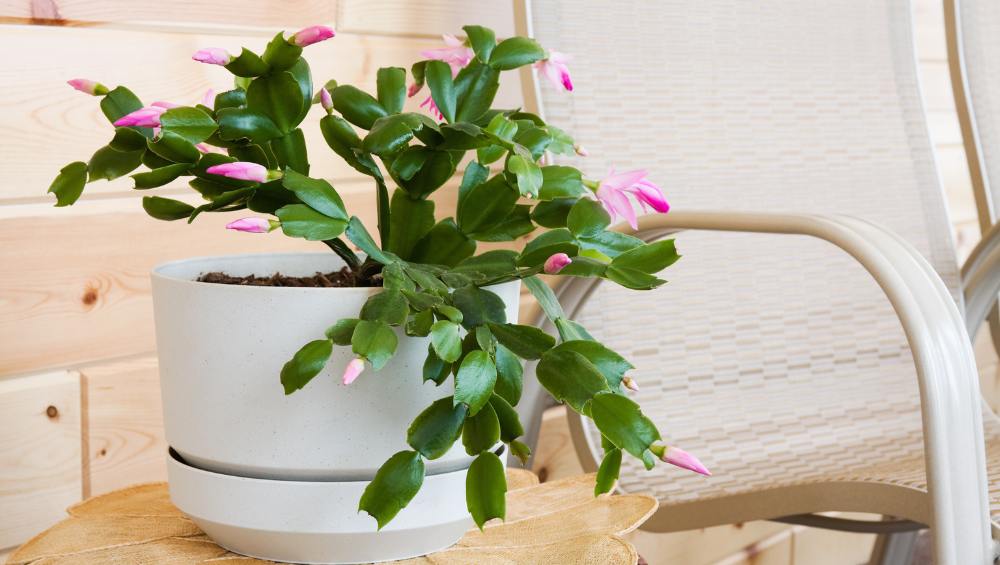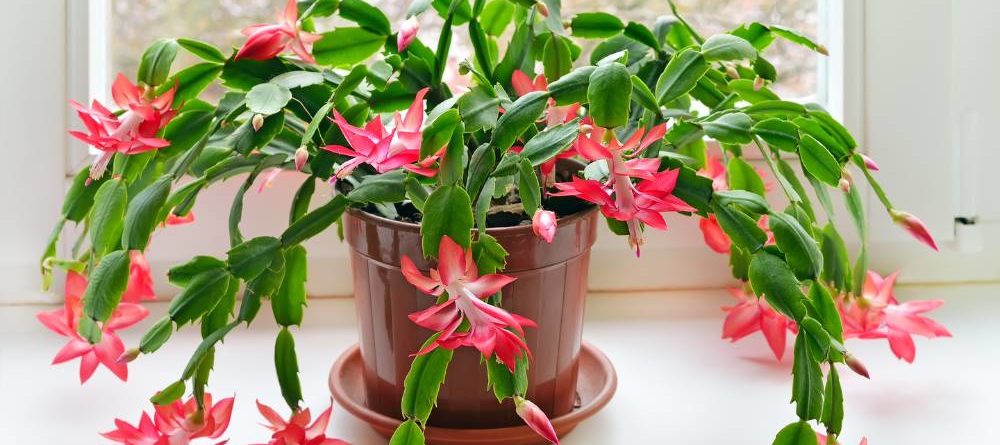Caring for A Christmas Cactus After The Holidays
The Christmas cactus (Schlumbergera x buckleyi) is a popular winter blooming houseplant from Brazil. Many people buy or are given one in late fall and then are not sure how to care for it the rest of the year.
Description
Christmas cacti have flattened stems with segments called phylloclades. These phylloclades are dark green and have two to four rounded projections on their sides. The flowers come in gold/yellow, pink, purple/lavender, red/burgundy, or white, depending on the type. Tubular flowers grow to be one to three inches long. Christmas cacti bloom in the winter for seven to eight weeks. The plant can grow to be three feet tall.
How to Care for the Christmas Cactus
Christmas cactus is a succulent but is maintained differently than many succulents. Here is how to take care of your Christmas cactus.
Pots
No special container is needed for your plant. Just make sure that any pot that contains your plant has drainage holes. Christmas cacti make good hanging baskets because their stems can hang down. Small pots will need to be watered more frequently because the soil will dry out faster.



Light
Place Christmas cactus in partial shade (3-6 hours of sunlight). Too much sun will cause the cactus to turn yellow and get sunburned.
Soil
The potting mix needs to be well-draining. In the wild, these cacti grow on trees. The University of Minnesota Extension recommends the following potting mix:
- One-part sterile potting soil
- Two parts peat moss
- One part sand or perlite
Water
Water your Christmas cactus by placing the pot in the sink and watering until water comes out the drainage holes and collects in a saucer placed beneath the pot. Wait fifteen minutes for the water to drain, then empty the water out of the saucer. Allow the soil to dry to the touch between waterings in the spring and summer. In the fall and winter, the soil must be kept evenly moist, or the flower buds and flowers will dry out and fall off.
Humidity
The Christmas cactus likes more humidity than most cacti. If the sides and tips of the stems are brown, the Christmas cactus needs more humidity than it is getting. Place the plant’s pot and saucer on a tray full of pebbles and fill the tray with water until only the top of the pebbles are dry. As the water evaporates, it creates a humid microclimate around the Christmas cactus. Remember to refill the pebble tray with water regularly.
Temperature
Christmas cacti do not like the high temperatures that cacti native to dryer regions prefer. A summer daytime temperature of 70-80 degrees is ideal. Daytime temperatures should be between 60-68, with 68 being ideal, in the fall and winter. Temperatures below 40 will injure or kill the Christmas cactus.
Fertilizer
Fertilize your Christmas cactus monthly with a balanced fertilizer mixed at half strength in the spring and summer. Fertilize with one teaspoon of Epsom salts mixed with one gallon of water during this time, but do not use it the same week you fertilize the plant. In the fall, switch to a fertilizer high in phosphorous to help the Christmas cactus bloom and discontinue the Epsom salts.
Weekly Maintenance
Check your Christmas cactus weekly for diseases, pests, or other problems. Turn it a quarter turn each week to keep it from growing toward the light. Wipe the stems with a soft, clean cloth.
Repotting
Christmas cacti like to be somewhat pot bound. Repot every three years and use fresh potting mix. It is best to repot the cactus in the spring.
Pruning and Propagating the Christmas Cactus
Pruning and propagation is done in May or June.
- Cut off stems with three to five sections.
- Place the cuttings in the shade for a day or two to allow the cut to callous over.
- Place up to three cuttings in a four-inch pot filled with potting mix.
- Put the cut end of the cutting one inch deep in the soil.
- Water the potting mix well.
- Place a plastic bag over the cuttings and the edge of the pot and secure the bag with a rubber band.
- Place the pot in bright, indirect light for three to eight weeks until roots have formed.
- Keep the soil moist but not soggy.
- When the roots have formed, remove the plastic bag.
- Transplant each cutting into its own container.
Getting Your Christmas Cactus to Bloom Again
Shorter days and cooler temperatures cue the Christmas cactus to bloom. In the fall, place your Christmas cactus where the night temperature is 50-55 degrees F. Be sure it still gets two to six hours of sunlight a day. The Christmas cactus will begin blooming in five to six weeks.
You can keep your Christmas cactus where the night temperature is 60-65 degrees F and still get it to bloom. However, you must keep the cactus in complete darkness for at least twelve hours a night for six weeks. Christmas cactus will not usually bloom if the night temperature is over 65 degrees F.
Diseases of the Christmas Cactus
Root rot is the major disease of Christmas cactus. This disease is caused by overwatering. Let the soil dry between waterings.
Pests of the Christmas Cactus
Christmas cactus can suffer from mealybugs, soft brown scale, red spider mites, aphids and fungus gnats.
For More Information
https://hgic.clemson.edu/factsheet/thanksgiving-christmas-cacti/
https://plants.ces.ncsu.edu/plants/schlumbergera-truncata/
https://extension.umn.edu/houseplants/holiday-cacti
https://www.extension.iastate.edu/linn/news/it-thanksgiving-christmas-or-easter-cactus


